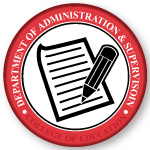Date of Award
Fall 2021
Degree Type
Dissertation
Degree Name
Doctor of Education (EdD)
Department
Educational Leadership
First Advisor
Tamara J. Williams
Abstract
The COVID-19 crisis upended the typical college experience as educational institutions had to close campuses and send students home mid-semester in the spring of 2020. The COVID-19 pandemic left educators around the world with limited choices on how to move forward with high quality education for all. This abrupt closing of higher education facilities forced an immediate pivot to online synchronous or asynchronous digital classrooms for faculty and students and ushered in emergency remote teaching. While higher education has gradually expanded online offerings every year over the past twenty years, for many college students, classes were still in person until the pandemic swept across the world in March 2020.
This exploratory research study investigates trends emerging during a forced shift to a digital interface on university faculty's instructional design regarding course content, assessment, and student engagement during the COVID-19 pandemic. A mixed data approach was used including an online self-assessment survey and in-depth online course shell reviews. This information was utilized to answer three questions for this study: What differences or patterns are taking place in content delivery? What differences or patterns are taking place in assessment? What differences or patterns are taking place with student engagement? The survey was administered to 46 faculty members who taught during the 2021 spring and/or summer semesters during the worldwide COVID-19 pandemic and 27 of these 46 faculty members agreed to an in-depth course shell review during the same timeframe.
Results from the survey indicated faculty had a high sense of self-efficacy with technology and felt confident finding technology tools, learning to use them, and implementing them during instruction. The data analysis indicated emerging practices around the following themes in content delivery, assessment, and student engagement: (a) consistent use of a set of technology tools, (b) video lectures, (c) active learning, (d) online assessments, (e) written feedback, (f) rubrics, (g) multiple means of communicating with the instructor, (h) students providing rich feedback to peers, and (i) synchronous opportunities for students to connect with peers. This research adds to the field of knowledge on emergency online teaching, online learning, and high-quality online courses by sharing the trends that emerged from teaching during this historic moment in time.
Recommended Citation
Feldmann, Ann E., "An Exploratory Study of the Trends Emerging from a Forced Shift to a Digital Interface on University Faculty's Instructional Design" (2021). Educational Leadership Theses, Dissertations, and Student Creative Activity. 24.
https://digitalcommons.unomaha.edu/edleadstudent/24


Comments
The author holds the copyright to this work. Any reuse or permission must be obtained from the author directly